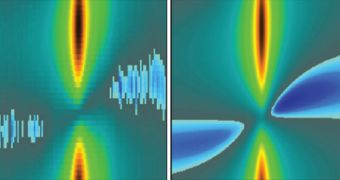A collaboration of researchers in California recently used a unique optical trapping system to observe two hypothetical quantum effects of light in an optomechanical system. This represents the first time that light amplification and squeezing is observed directly.
The achievement was reached by experts at the University of California in Berkeley (UCB) and the US Department of Energy's (DOE) Lawrence Berkeley National Laboratory (Berkeley Lab). The work has far-reaching implications.
For example, low-power quantum optical devices are now one step closer to reality. In addition, the data may be used to inform the design and construction of powerful gravitational wave detectors, to be launched to space aboard satellite constellations.
“We’ve shown for the first time that the quantum fluctuations in a light field are responsible for driving the motions of objects much larger than an electron and could in principle drive the motion of really large objects,” Berkeley Lab Materials Science Division expert Daniel Brooks says.

 14 DAY TRIAL //
14 DAY TRIAL //